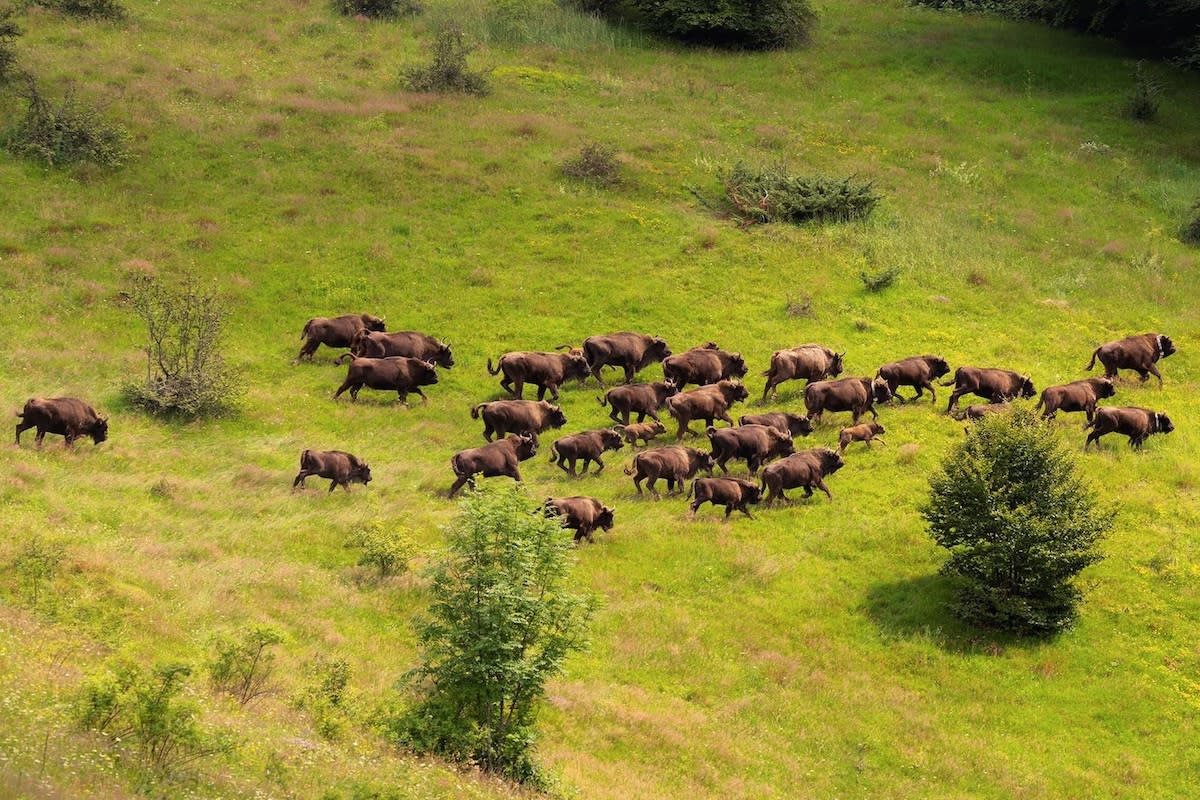How a Small Herd of Romanian Bison Is Locking Away Thousands of Tons of Carbon

Gone from Romania for 200 years, European bison were reintroduced to the Țarcu Mountains, at the southern end of the Carpathian range, in 2014. Now numbering 170, the bison are reshaping the mountain landscape in ways that are helping clean up emissions.
Bison fertilize grasses and spread seeds, spurring growth. With their enormous girth, they also compact soil, helping to keep carbon locked in the ground. According to a new modeling study from the Yale School of the Environment, the Țarcu grasslands are capturing roughly 10 times as much carbon as they were before bison were reintroduced.
The research estimates that just 20 square miles of grassland are drawing down an additional 54,000 tons of carbon annually, an amount equal to the yearly emissions of 43,000 cars. The findings, which have not yet been peer-reviewed, highlight how the restoration of large animals can help slow warming.
Oswald Schmitz, lead author of the new study, previously estimated that protecting and restoring just nine types of animals — marine fish, whales, sharks, gray wolves, wildebeest, sea otters, musk oxen, African forest elephants, and American bison — could lead to the capture of an addition 6.4 billion tons of carbon dioxide annually, an amount roughly equal to the yearly emissions of the U.S.
ALSO ON YALE E360
Jared Kushner Has Big Plans for Delta of Europe’s Last Wild River

